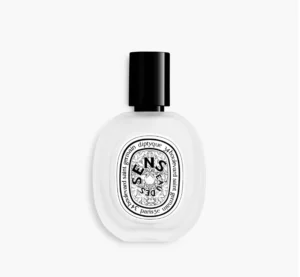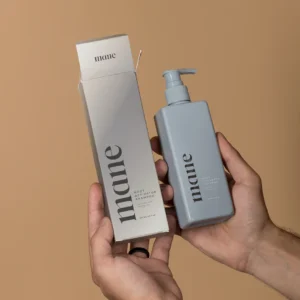Welcome to the ultimate guide to Soapbox shampoos. If you want to know which Soapbox shampoo will work best for your hair type, you found the right place.
This post shares everything you need to know about Soapbox products, their effectiveness, and how they compare to other brands.
Soapbox creates hair care products that combine quality ingredients with a social mission. For every product purchased, they donate soap to people in need. But does their shampoo actually work? Let’s find out.
Key Takeaways
- Soapbox offers several specialized shampoo formulas including Coconut & Shea for deep moisture, Tea Tree & Mint for scalp balance, Biotin & Superfruit for volume, and Argan Oil for frizz control
- All Soapbox shampoos are free from harsh chemicals including sulfates, parabens, phthalates, and silicones, making them suitable for color-treated hair
- The brand has a strong ethical commitment with cruelty-free and vegan certification from PETA
- Soapbox donates soap to vulnerable communities for every product purchased through their Hope Code program
- Most reviews praise Soapbox shampoos for their gentle formulas, pleasant scents, and effectiveness for various hair types
- Some users report issues including buildup on certain hair types and occasional scalp dryness
- Ingredient highlights include biotin for hair strength, tea tree oil for scalp health, and coconut oil for deep moisture
- Price points are mid-range at approximately $8-12 per regular bottle, making them more affordable than premium salon brands
- Limited complaints exist about Soapbox products causing hair loss unlike some competing brands
- All products are made in the USA specifically in Indiana
- Shampoo consistency varies by formula with some being creamier (Coconut & Shea) and others more liquid (Biotin & Superfruit)
- The brand offers both bottled shampoo and shampoo bars for environmentally conscious consumers
What Makes Soapbox Shampoo Different
Soapbox stands apart from other shampoo brands through its commitment to social impact. Founded in 2010, the company follows a simple yet powerful mission: to provide soap to vulnerable communities worldwide. For every Soapbox product purchased, they donate a bar of soap through partnerships with organizations like Clean the World Foundation.
The brand creates products free from harmful ingredients. All Soapbox shampoos avoid harsh sulfates, parabens, and silicones that can damage hair. This makes them suitable for all hair types including color-treated hair.
The company has grown from $4.9 million in revenue in 2019 to a projected $23.3 million in 2023, showing strong consumer support for their business model. Their products appear in major retailers including Walmart, Target, and CVS.
Unlike many competing brands, Soapbox shampoos use real ingredients that target specific hair concerns. They focus on botanical extracts, essential oils, and vitamins rather than synthetic chemicals. This approach appeals to consumers who want effective products without potentially harmful additives.
Each shampoo formula targets a specific hair need rather than taking a one-size-fits-all approach. This specialized focus allows them to create more effective solutions for different hair types and concerns.
Soapbox Coconut and Shea Deep Moisture Shampoo Review
The Coconut & Shea Deep Moisture Shampoo ranks among Soapbox’s most popular formulas, particularly for people with dry or damaged hair. This shampoo combines coconut oil, shea butter, and jojoba oil to provide intense hydration.
The creamy formula creates a rich lather despite being sulfate-free. Many users with coarse or wavy hair report excellent results. One reviewer stated: “It does a great job of detangling and leaving my hair feeling soft and hydrated.”
Key benefits of this formula include:
- Deep moisturizing effect without heaviness
- Gentle cleansing that preserves natural oils
- Pleasant tropical scent that isn’t overwhelming
- Suitable for daily use without buildup
- Works well for thick, coarse, or curly hair types
The shampoo contains coconut oil rich in vitamins and fatty acids that help protect hair strands. It works by binding to hair proteins and creating a protective layer. The shea butter adds additional moisture while jojoba oil helps balance the scalp.
Some users note that while the shampoo works well for dry hair, it might be too rich for very fine or oily hair types. Those with naturally greasy roots may prefer one of Soapbox’s lighter formulas instead.
Overall, the Coconut & Shea formula receives consistently positive reviews for its moisturizing properties. Most users report softer, more manageable hair after just a few uses.
Soapbox Tea Tree and Mint Scalp Balancing Shampoo Review
The Tea Tree & Mint Scalp Balancing Shampoo targets those struggling with scalp issues like buildup, irritation, or excess oil. This formula uses tea tree oil, mint, and rosemary to create a refreshing cleansing experience.
The standout feature is its ability to provide a deep clean without stripping hair. Many users describe a pleasant tingling sensation during use. One reviewer mentioned: “The tea tree and mint scent is so invigorating and energizing. This shampoo makes my scalp feel so clean.”
Benefits of this formula include:
- Removes buildup and excess oil effectively
- Creates a refreshing, tingly sensation
- Helps rebalance an oily scalp
- Provides a deep clean without dryness
- Works well for those with dandruff or flaking
The tea tree oil component serves as a natural purifier that helps remove residue from styling products and environmental pollutants. It has antimicrobial properties that can help with scalp health. The mint adds a cooling effect while rosemary helps stimulate the scalp.
Some users report that this formula works best when alternated with a more moisturizing shampoo. Very dry hair types might find it slightly clarifying if used daily.
Multiple reviews mention improved scalp health after switching to this shampoo. One user commented: “After the first use, I did feel an instant clean. I didn’t feel any build up and it left my hair feeling airy, healthy, but yet very silky.”
Soapbox Biotin and Superfruit Volumizing Shampoo Review
The Biotin & Superfruit Volumizing Shampoo targets those seeking fuller, thicker-looking hair. This formula combines biotin (vitamin B7), vegan collagen, and superfruits like elderberry and plum oil.
The consistency is thinner than other Soapbox formulas, which helps it distribute easily through hair without weighing it down. Users with fine hair particularly appreciate this aspect. One reviewer noted: “I love the consistency of the shampoo because it’s like water, and it goes through the hair easily.”
Key benefits of this formula include:
- Creates visible volume and fullness
- Strengthens hair to prevent breakage
- Adds shine without greasiness
- Lightweight formula suitable for fine hair
- Pleasant fruity scent that isn’t overpowering
The biotin component helps support hair structure and may contribute to healthier growth. The elderberry and plum oil contain antioxidants that help protect hair from environmental damage.
While biotin in shampoo won’t dramatically increase hair growth (oral supplements are more effective for that purpose), it can improve the appearance of existing hair by strengthening strands and reducing breakage.
Some users report significant improvements in hair thickness and overall appearance. A reviewer commented: “After a few weeks of use, I noticed my hair looked fuller and had more body. The breakage I was experiencing also decreased.”
This formula works best for those with fine, thin, or limp hair seeking more volume. Those with very dry or coarse hair might prefer Soapbox’s more moisturizing formulas instead.
Soapbox Argan Oil Control and Soften Shampoo Review
The Argan Oil Control & Soften Shampoo focuses on taming frizz and creating smoother, softer hair. This formula uses argan oil and shea butter to provide moderate moisture while improving hair texture.
The formula excels at reducing frizz without weighing down hair. Many users with wavy or curly hair find it helps make their texture more manageable. One reviewer shared: “I’ve found this SoapBox set works well for various hair types. The argan oil and shea butter in the formula help tame frizz and add softness.”
Key benefits of this formula include:
- Reduces frizz and flyaways effectively
- Smooths hair cuticles for added shine
- Provides moderate moisture without heaviness
- Controls unruly hair without stiffness
- Works well for wavy, curly, or coarse textures
The argan oil component, often called “liquid gold,” contains high levels of beneficial fatty acids, vitamin E, and antioxidants. These nutrients help smooth the hair cuticle and lock in moisture. The shea butter adds additional softening benefits.
This formula strikes a good balance between cleansing and moisturizing. It removes buildup without stripping natural oils, which helps maintain hair’s natural shine and softness.
One user described their experience: “It felt lush. My hair is the longest it has ever been in years, and my curls look so healthy. The bar has a light scent that is pleasant but not overwhelming.”
The Argan Oil formula comes in both liquid form and as a shampoo bar, giving consumers options based on their environmental preferences.
Soapbox Ingredients Analysis
Soapbox emphasizes clean ingredients in all their formulations. Looking at their ingredient lists reveals some consistent patterns across products:
Common base ingredients in all formulas include:
- Water (Aqua) – The primary solvent
- Cocamidopropyl Betaine – A gentle surfactant derived from coconut oil
- Sodium C14-16 Olefin Sulfonate – A cleansing agent milder than traditional sulfates
- Glycerin – A humectant that attracts moisture
The formulas avoid potentially harmful ingredients such as:
- Harsh sulfates (SLS/SLES) that can strip hair
- Parabens linked to hormonal disruption
- Silicones that can cause buildup
- Phthalates with potential health concerns
- EDTA with environmental concerns
Each formula then adds specialized ingredients based on its purpose:
- Coconut & Shea: Cocos Nucifera (Coconut) Oil, Butyrospermum Parkii (Shea) Butter
- Tea Tree & Mint: Melaleuca Alternifolia (Tea Tree) Leaf Oil, Mentha Viridis (Spearmint) Leaf Oil
- Biotin & Superfruit: Biotin (Vitamin B7), Sambucus Nigra Fruit Extract (Elderberry)
- Argan Oil: Argania Spinosa (Argan) Kernel Oil, Butyrospermum Parkii (Shea) Butter
The brand also incorporates a 5X vitamin complex in many formulas including:
- Vitamin B5 (panthenol) for moisture
- Vitamin B7 (biotin) for strength
- Vitamin B9 for shine
- Vitamin C for scalp health
- Vitamin E for strand protection
All products are certified cruelty-free and vegan by PETA, meaning they contain no animal-derived ingredients and undergo no animal testing. For environmentally conscious consumers, this ethical stance adds significant value.
How Soapbox Compares to Other Brands
When compared to other popular shampoo brands, Soapbox occupies a middle position in terms of price and formulation. Here’s how it stacks up:
Price comparison:
- Budget brands (Suave, VO5): $2-4 per bottle
- Soapbox: $8-12 per bottle
- Mid-range brands (OGX, Maui Moisture): $6-10 per bottle
- Premium brands (Redken, Pureology): $20-30+ per bottle
Formulation comparison:
- Unlike many drugstore brands, Soapbox avoids harsh sulfates and parabens
- Similar to brands like OGX and Maui Moisture, they emphasize botanical ingredients
- Not as specialized as professional salon brands that target specific hair concerns
- More transparent about ingredients than many competing brands
Social impact comparison:
- Few mainstream hair care brands have a one-for-one donation model
- Some competitors like Love Beauty and Planet focus on sustainability
- Professional brands like Aveda emphasize environmental responsibility
- Soapbox uniquely combines affordable pricing with direct social impact
The brand differs from competitors that have faced lawsuits over ingredients. Unlike brands such as TRESemmé and OGX that faced legal challenges related to ingredients allegedly causing hair loss, Soapbox has maintained a relatively clean record in this area.
Customer reviews frequently mention Soapbox as a good alternative to more expensive salon brands. One reviewer noted: “I switched from a $30 salon shampoo to Soapbox and honestly see no difference in how my hair looks and feels.”
Customer Experiences with Soapbox Shampoos
Real user experiences with Soapbox shampoos reveal both strengths and limitations of the products. Here’s what actual customers report:
Positive experiences commonly mentioned:
- Gentle cleansing without stripping natural oils
- Pleasant scents that aren’t overwhelming
- Improved hair texture and manageability
- Good value compared to salon brands
- Appreciation for the social mission
One satisfied customer wrote: “After a few washes with Soapbox Shampoo I did notice a healthier sheen to my hair. My hair definitely feels softer and more manageable with less frizz. My hair feels clean without feeling harsh chemicals.”
Limitations or concerns mentioned:
- Some users report scalp dryness with certain formulas
- A few mentions of sebum plugs developing (though rare)
- Occasional complaints about watery consistency in some formulas
- Not always effective for very specific hair concerns
- Mixed results for those with very curly or coily hair
A Reddit user shared: “The Soapbox does help keep my hair looking healthy, but doesn’t diminish friziness. I do use after care sprays like Shea Moistures Hydrate and Repair Power Spray.”
Most reviews indicate that results vary based on hair type. Those with normal to slightly dry hair typically report the best outcomes. People with extremely dry, damaged, or highly textured hair sometimes find they need additional products for optimal results.
The majority of users agree that Soapbox products outperform typical drugstore brands while remaining more affordable than high-end salon products.
Tips for Getting the Best Results with Soapbox Shampoo
To maximize the benefits of Soapbox shampoos, consider these practical tips from experienced users:
General usage tips:
- Apply to thoroughly wet hair for best lather
- Use a quarter-sized amount for shoulder-length hair
- Focus on cleansing the scalp rather than the ends
- Rinse thoroughly to prevent residue buildup
- Follow with a matching Soapbox conditioner for best results
Formula-specific tips:
- For Coconut & Shea: Work through hair slowly to allow oils to penetrate
- For Tea Tree & Mint: Massage into scalp for 1-2 minutes to maximize benefits
- For Biotin & Superfruit: Use lukewarm water to maintain volume
- For Argan Oil: Apply to soaking wet hair to enhance smoothing effects
Frequency recommendations:
- Normal hair: Every 2-3 days
- Oily hair: Every 1-2 days
- Dry hair: Every 3-4 days
- Consider alternating between two Soapbox formulas for balanced results
Many users find combining different Soapbox formulas works well for addressing multiple concerns. For example, using Tea Tree & Mint on the scalp and roots while using Coconut & Shea on the ends can help balance oil production while maintaining moisture.
For those with very dry hair, letting the shampoo sit for 1-2 minutes before rinsing can enhance its moisturizing effects. Conversely, those with fine hair should rinse promptly to prevent weighing down strands.
The Social Impact of Buying Soapbox Products
One of Soapbox’s key differentiators is its social mission. The brand operates on a one-for-one model: for every product purchased, they donate a bar of soap to someone in need.
This mission addresses a critical global health issue. Proper handwashing with soap can reduce diarrheal disease-associated deaths by up to 50%, yet millions worldwide lack access to basic hygiene products.
Here’s how their donation program works:
- In the United States: They partner with Clean the World Foundation to produce eco-friendly soap from scrap soap, which is distributed to homeless shelters, food pantries, schools, and health clinics.
- Internationally: They work with organizations in countries like India, Cambodia, and Haiti to support local soapmakers while providing hygiene education.
Each Soapbox product includes a unique “Hope Code” that customers can enter on the company website to see exactly where their donation went. This transparency reinforces consumer trust in the brand’s mission.
Beyond soap donations, Soapbox is certified as a B Corporation, meaning they meet high standards of social and environmental performance, transparency, and accountability. Their business practices consider the impact on workers, customers, community, and environment.
For conscious consumers, this social mission adds significant value to the purchase. Many reviews mention this aspect as a deciding factor: “I like that I’m helping others while buying something I need anyway.”
Is Soapbox Shampoo Worth the Price?
When evaluating the value proposition of Soapbox shampoos, several factors come into play:
Price analysis:
- Regular 16oz bottles typically retail for $8-12
- Larger 1-liter pump bottles cost around $20-25
- This positions them as affordable premium products
- More expensive than basic drugstore brands but cheaper than salon brands
Value considerations:
- Free from harsh chemicals found in cheaper alternatives
- Contains beneficial ingredients comparable to more expensive brands
- Each purchase includes a charitable donation
- Products are cruelty-free and vegan certified
Most users find the quality-to-price ratio favorable. As one reviewer put it: “You get a salon-quality product at drugstore prices, plus you’re helping donate soap to people who need it.”
The shampoos are widely available at retailers like Target, Walmart, CVS, and Amazon, often with sales or promotions that further enhance their value.
For those concerned about longevity, most users report that the 16oz bottles last 1-2 months with regular use, making them economical over time despite the slightly higher upfront cost compared to budget brands.
The bottom line: If you value clean ingredients, ethical practices, and social impact—while still getting effective hair care—Soapbox shampoos offer good value for money.
Where to Buy Authentic Soapbox Products
To ensure you purchase genuine Soapbox products with fresh formulations, consider these purchasing options:
Official channels:
- The official Soapbox website (soapboxsoaps.com)
- Major retailers including Target, Walmart, and CVS
- Online platforms like Amazon (check for “sold by Soapbox” listing)
- Specialty retailers like Ulta and Sally Beauty
Tips for verifying authenticity:
- Check for the Hope Code on the packaging
- Look for current packaging designs shown on the official website
- Verify that the product is made in the USA (specifically Indiana)
- Be wary of unusually low prices that could indicate counterfeits
Soapbox regularly offers bundle deals on their website, such as shampoo and conditioner sets that provide better value than buying items separately. They also offer a store locator tool on their website to help find local retailers.
For first-time buyers unsure which formula to try, the brand occasionally offers sample sets or travel sizes, though these have limited availability.
When purchasing online, read seller reviews carefully and avoid third-party international sellers who might stock older formulations or unauthorized versions of the products.
FAQ: Common Questions About Soapbox Shampoos
Are Soapbox shampoos sulfate free?
Yes. All Soapbox shampoos are free from harsh sulfates like SLS and SLES. They use milder cleansing agents derived from coconut that clean effectively without stripping hair.
Do Soapbox shampoos cause hair loss?
No widespread reports link Soapbox shampoos to hair loss. Their formulas avoid ingredients commonly associated with hair loss in other brands’ lawsuits.
Are Soapbox products tested on animals?
No. Soapbox is certified cruelty-free by PETA and does not test on animals. They only test their products on human volunteers.
Do Soapbox shampoos work for colored hair?
Yes. All Soapbox shampoos are color-safe and free from harsh ingredients that typically strip color. Many users with dyed hair report good color retention.
Are Soapbox products vegan?
Yes. All Soapbox hair products are 100% vegan and contain no animal-derived ingredients.
How often should I use Soapbox shampoo?
This depends on your hair type. For normal hair, 2-3 times weekly is typical. Oily hair may need daily washing, while dry hair might benefit from just 1-2 times per week.
Where are Soapbox products made?
All Soapbox shampoos, conditioners, and body washes are manufactured in Indiana, USA.
Do Soapbox shampoos cause buildup?
Most users report minimal buildup compared to silicone-heavy formulas. However, those with very fine hair might occasionally benefit from a clarifying treatment.
Can I use Soapbox shampoo on children?
Yes. The gentle, clean formulations make them suitable for children and those with sensitive skin. The Tea Tree formula may be too stimulating for very young children.
How does the Hope Code donation program work?
Each product has a unique code that customers can enter on the Soapbox website to see where their soap donation went. This transparency allows customers to track their impact.
Which Soapbox shampoo is best for dry hair?
The Coconut & Shea Deep Moisture Shampoo is specifically formulated for dry, damaged hair with its rich moisturizing ingredients.
Are Soapbox shampoos good for curly hair?
Many curly-haired users report good results, particularly with the Coconut & Shea and Argan Oil formulas. However, those with very tight curls might need additional moisture.
Last update on 2025-07-02 / Affiliate links / Images from Amazon Product Advertising API Some of the links on this website are affiliate links, which means that at no additional cost to you, I earn a commission if you click through and make a purchase. I only recommend products and services that I believe will add value to my readers. Thank you for your support!



